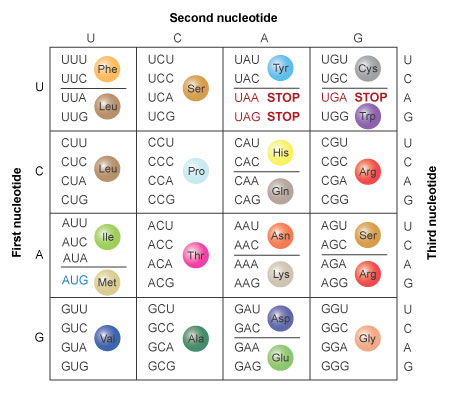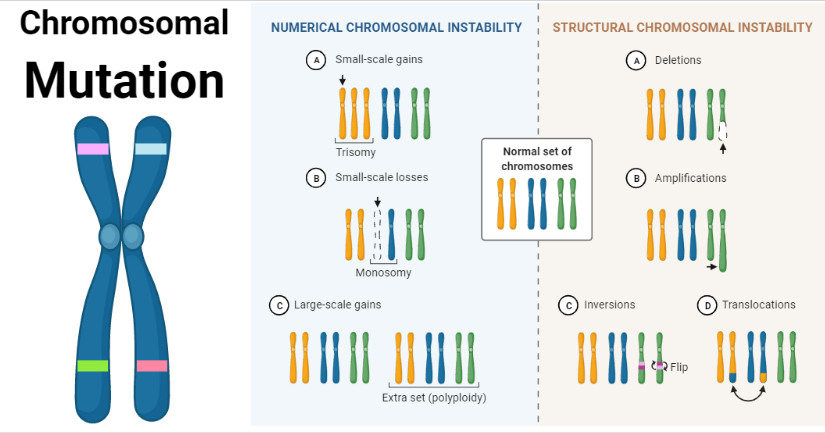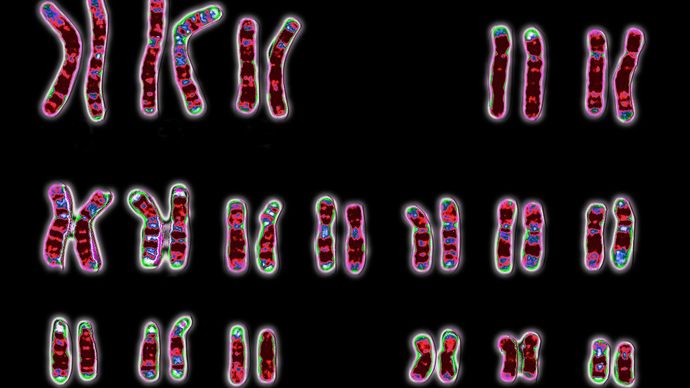Mutations Study Guide
Introduction:
A mutation is a change in a live organism’s genetic material (the genome) that is more or less permanent and may be passed on to the cell’s progeny. Changes in genotype can result in changes in phenotype. Germinal mutations in egg or sperm cells might result in an individual progeny with the mutation in all of their cells, which can cause major problems, like in the case of a human genetic disorder like cystic fibrosis.
The function and amount of gene products determine the phenotype of organisms.
- The normal function of the genes and gene products collectively comprises the normal function of organisms.
- Disruptions in genes and gene products cause new phenotypes.
Let’s learn about genetic mutations in detail.
Understanding genetic mutations process
Mutations can occur due to errors in DNA’s regular chemical transactions, such as replication, or as a result of exposure to high-energy electromagnetic radiation (e.g., ultraviolet light or X-rays), particle radiation, or highly reactive substances in the environment.
Mutations are largely harmful since they are random alterations, although some may be advantageous in particular settings. Advantageous mutations are called positive mutations. These give rise to favorable traits and subsequent phenotypes. In general, mutation is the primary source of genetic variation, the foundation for natural selection. Certain mutations that do not affect the resulting protein are called neutral mutations.
Alterations might cause a mutation in a gene or the chromosome itself.
- When the allele of a gene changes, it is called a gene mutation.
- Segments of chromosomes, complete chromosomes, or entire sets of chromosomes can alter due to chromosomal mutation.
Types of mutation:
There are several classification methods for different types of mutations.
Cell types involved —
1. Somatic mutations:
- Mutations are found in the body’s somatic tissues.
- Progeny is not affected by mutations.
- Whether the mutation is dominant or recessive determines the size of the phenotypic effect (dominant mutations generally have a greater effect).
2. Germinal mutations:
- Mutations that occur in the body’s germ tissues.
- Mutations can be passed on to the next generation.
- Dominant mutations appear in the first generation following a mutation.
- Recessive mutations are only discovered through accidental mating with someone who also carries the recessive allele; as a result, the recessive mutation may go undetected for many generations.
Direction of mutation —
1. Forward mutations:
Forward mutations occur when mutations cause a shift in an organism’s phenotype from wild type to aberrant. The majority of mutations are of the forward type.
2. Back or reverse mutations:
Forward mutations are frequently rectified by error-correcting mechanisms, transforming an aberrant phenotype into a wild type one.
Quality and size —
1. Point mutation:
Point mutation occurs when heritable changes occur in a tiny piece of DNA, such as a single nucleotide or nucleotide pair. The following forms of sub-nucleotide changes in DNA and RNA can cause point mutations:
- Deletion mutations are a type of mutation that occurs when a gene is deleted. A point mutation occurs when a piece (single nucleotide pair) of a triplet codon in a cistron or gene is lost or deleted.
- Insertion or addition mutation- Insertion mutations are point mutations that arise when one or more additional nucleotides are added to a gene or cistron.
- Frameshift mutations are caused by the insertion or deletion of particular nucleotides and cause the rest of the message downstream of the mutation to be read out of phase.
- Substitution mutation is a point mutation in which another nucleotide replaces one nucleotide of a triplet.
2. Multiple mutations or gross mutations:
Gross mutations are alterations that affect more than one nucleotide pair or an entire gene. Rearrangements of genes throughout the genome cause gross mutations.
Chromosomal mutation and types:
Chromosomal aberrations or chromosome mutations are alterations in the genome involving chromosome sections, complete chromosomes, or full chromosome sets. Chromosome mutations are extremely important in practical biologies, such as agriculture (including horticulture), animal husbandry, and medicine.
Changes in the number of genes:
- Deletion: Deletion occurs when a damaged section of a chromosome is lost.
- Addition: Duplication, including the addition of a chromosomal segment.
Changes in gene structure:
- A set of genes is rotated by 180 degrees within one chromosome: A damaged chromosomal fragment gets reattached to the parent chromosome in reverse order, known as inversion.
- Parts move across chromosome pairs: New linkage connections are formed when a damaged section of a chromosome is connected to a non-homologous chromosome.
Euploidy:
- Euploidy is the loss or acquisition of a whole set of chromosomes.
- Euploid organisms have a balanced set or sets of chromosomes in any number.
- The monoploid number, x, is the number of chromosomes in a basic set.
- Polyploid euploid kinds are those with more than two sets of chromosomes.
- Having a chromosomal number that is an exact multiple of a basic chromosome set is called Euploidy Mutation. In euploidy, this signifies that the number of chromosomal sets has grown.
Polyploidy:
One or more sets of chromosomes are added.
Aneuploidy:
- It is characterized by the loss or increase of a portion of the chromosomal set.
- It’s a situation where one or a few chromosomes are added or removed from the usual amount of chromosomes. As a result, the number of chromosomes in aneuploidy might differ from that in the wild type.
Nullisomy, monosomy, and trisomy are three different kinds of aneuploidy:
- Nullisomy (2n-2) is the lack of both homologous pair chromosomes. Most creatures may die as a result of these circumstances.
- Monosomy (2n-1) is the loss of one of the homologous pair’s chromosomes.
- The addition of an additional chromosome (2n+1) is known as trisomy.
- Trisomy includes conditions such as Klinefelter syndrome (44 XXY/XYY) and Down syndrome.
Down’s syndrome
- Now let’s understand how alterations in DNA sequences contribute to variation that can be subject to natural selection:
- Changes in genotype may affect phenotypes that are subject to natural selection. Genetic changes that enhance survival and reproduction can be selected for by environmental conditions.
- The horizontal acquisitions of genetic information primarily in prokaryotes via transformation (uptake of naked DNA), transduction (viral transmission of genetic information), conjugation (cell-to-cell transfer of DNA), and transposition (movement of DNA segments within and between DNA molecules) increase variation.
- Related viruses can combine/recombine genetic information if they infect the same host cell.
- Reproduction processes that increase genetic variation are evolutionarily conserved and are shared by various organisms.
Conclusion:
- A mutation is a change in a live organism’s genetic material (the genome) that is more or less permanent and may be passed on to the cell’s progeny.
- Point mutations occur when heritable changes occur in a very tiny piece of DNA, such as a single nucleotide or nucleotide pair.
- The addition of an additional chromosome (2n 1) is known as trisomy. Trisomy includes conditions such as Klinefelter syndrome (44 XXY/XYY) and Down syndrome.
FAQs:
1. Where do mutations occur?
Before meiosis, mutations develop during DNA replication. During metaphase-I, alleles from various homologous structures are mixed to form novel combinations. The resultant eggs or sperm have a mix of maternal and paternal chromosomes when meiosis is complete.
2. What causes mutations?
Mutations can occur due to DNA copying errors during cell division, exposure to ionizing radiation, exposure to substances known as mutagens, or viral infection. Somatic mutations occur in body cells and are not passed on to children, but germline mutations occur in eggs and sperm and can be passed onto offspring.
3. What is DNA mutation?
When a DNA gene is destroyed or altered so that the genetic message carried by that gene is altered, it is called a mutation. A mutagen is a chemical that may cause a permanent change in the physical makeup of a DNA gene, resulting in a change in the genetic information.
We hope you enjoyed studying this lesson and learned something cool about Mutations! Join our Discord community to get any questions you may have answered and to engage with other students just like you! Don’t forget to download our App to experience our fun, VR classrooms – we promise, it makes studying much more fun! 😎
Sources:
- Mutation. https://flexbooks.ck12.org/cbook/ck-12-biology-flexbook-2.0/section/4.8/primary/lesson/mutation-types-bio/. Accessed 20 Dec, 2021.
- Mutation Causes. https://flexbooks.ck12.org/cbook/ck-12-biology-flexbook-2.0/section/4.9/primary/lesson/mutation-causes-bio/. Accessed 20 Dec, 2021.
- Genetic Mutation. https://www.nature.com/scitable/topicpage/genetic-mutation-441/. Accessed 20 Dec, 2021.
- TYPES OF MUTATIONS. https://openoregon.pressbooks.pub/mhccbiology102/chapter/7-4-what-kinds-of-gene-mutations-are-possible/. Accessed 20 Dec, 2021.




